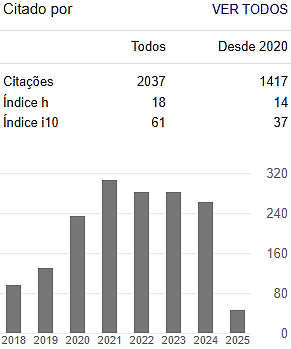DYNAMICS AND INTERFACE DEFOLIATION GRAZING: REVIEW
Palavras-chave:
animal, frequency, managementResumo
In the last five decades researchers have attempted to explain how adaptations of the morphology of the mouth and digestive tract of large ruminants interact with different food scales in the pasture ecosystem independent of the grazing method, thus understanding the dynamics of defoliation is essential in the analysis of response variations in forage production. A brief review of the literature on the factors related to the animal and plant components, influence of the grazing process and the defoliation dynamics will be presented. Grazing is the fundamental procedure that influences the dynamics and functioning of pasture ecosystems. The structural components of the tiller present in the horizontal plane of the forage canopy are likely to lead to differences in resource exploitation and impacts on vegetation, and many variables should be analyzed to fully understand the defoliation, since variations in canopy architecture are also influenced by the grazing method itself, which modifies the harvest and use of forage. In different grazing methods, it was observed that defoliation behaves in an analogous way among the methods, considering that the only variation was in the number of grazing animals, that is, changes in the stocking rate. The level of defoliation of individual tiller and its respective structural components, coupled with the grazing process, allows us to understand how the management of the pasture by adjusting the animal load influences the choices of the animals during the forage harvesting process.
Downloads
Downloads
Publicado
Edição
Seção
Licença
Copyright (c) 2019 Colloquium Agrariae. ISSN: 1809-8215

Este trabalho está licenciado sob uma licença Creative Commons Attribution-NonCommercial-NoDerivatives 4.0 International License.

